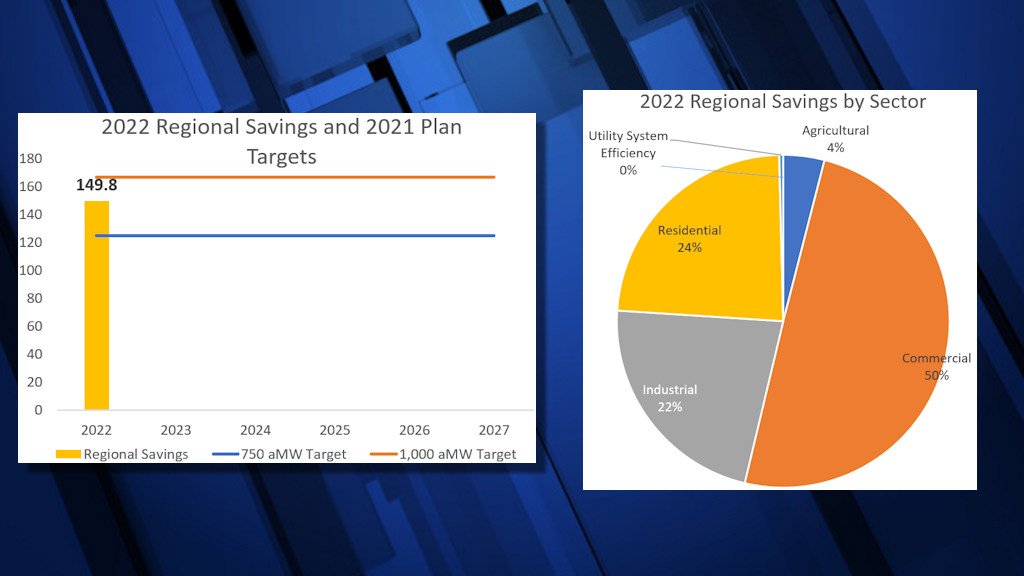NW Power Council meets in Redmond, learns region is off to good start in meeting energy efficiency goals

REDMOND, Ore. (KTVZ) -- At its recent meeting in Redmond, the Northwest Power and Conservation Council heard a presentation on the region’s initial good progress toward achieving its energy efficiency goals.
The Council collects data each year about energy efficiency achievements from Northwest utilities, the Bonneville Power Administration and the Northwest Energy Efficiency Alliance for its regional progress report.
The report found that in 2022, the Northwest saved 150 average megawatts of electricity, putting the region on track to meet its 2021 regional power plan’s goals for cost-effective energy efficiency. The plan set a target range of 750 to 1,000 average megawatts over the six-year action plan period—approximately 125 to 167 average megawatts annually.
The plan named energy efficiency as an essential resource for an adequate power supply and reported that the 2022 savings are a good start. With increasing conservation potential across the six-year period, and a regional commitment to stable and sufficient investment, the plan’s efficiency targets are within reach.
Bonneville contributed 39 average megawatts of program savings to the region’s achievements. To continue to meet the programmatic minimum target of 243 average megawatts over the six-year time frame, BPA will have to maintain this level of efficiency and capitalize on the increasing potential identified in the power plan.
An additional 12.5 average megawatts of energy efficiency were achieved in accordance with the plan’s guidance to support decarbonization goals, bolster rural markets, and weatherize all homes.
While achieving energy efficiency is getting more complex, the region has been a national leader in conservation and has made significant achievements since 1978. The region has now saved about 7,678 average megawatts, as tracked by the Regional Technical Forum. This represents:
• The annual energy consumption of 6.1 million homes in the Pacific Northwest
• Almost three times the generation of Grand Coulee Dam
• More than 24.4 million metric tons of avoided CO2 emissions
“The progress report confirms the region’s continued commitment to energy efficiency as a critical tool in keeping the lights on and electricity costs low,” noted Council Chair Jeff Allen. “We’re off to a good start—we need to maintain our effort.”
The Council is a compact of the states of Idaho, Montana, Oregon, and Washington, by the 1980 Northwest Power Act to prepare a power plan to assure the Pacific Northwest an adequate, efficient, economical, and reliable power supply. The power plan includes a program to protect and enhance fish and wildlife of the Columbia River Basin affected by hydropower dams.